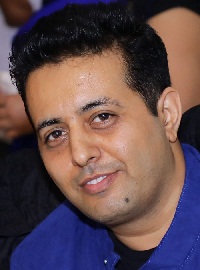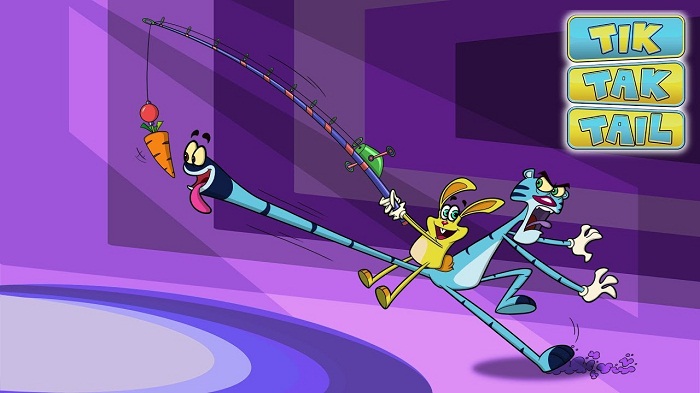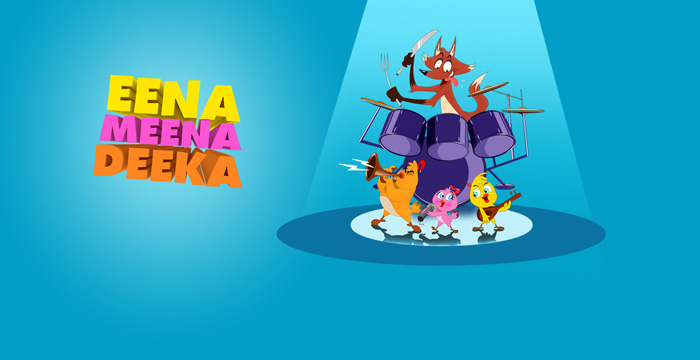
We’ve recently discussed a lot about how the Indian animation industry is flourishing. From Indian IPs making their global presence felt to the further push for home-grown IPs, the scale at which the industry is pacing forward seems plausible.
In today’s feature we speak to Dheeraj Berry, one of the earliest joiners of the industry. Berry has worked on several famed Indian IPs like Eena Meena Deeka, Tik Tak Tail and Motu Patlu.
Tell us a little about your journey as a content creator.
I started as an assistant director for the vastly popular, visual effects heavy TV show, Sonpari. I got an opportunity to try my hand at VFX. There was a very different kind of attraction to it and somehow I was just more inclined to working with VFX. When I joined the erstwhile Maya, it was a well-known player in the VFX industry. Maya did not have a CGI function back then.
I worked on Ketan Mehta’s magnum opus, Mangal Pandey which was visual effect heavy. I was also actively involved in the post-production of Ramayana: The Epic. This was my first fully CGI animation project. After Ramayana, we shifted our focus to animation. This also heralded the beginning of our journey as an IP creator.
We decided to start making our own IPs. We wanted to build brand Maya. That is when we started proceedings for our first show, Motu Patlu. It was my first show as a writer, production head and creative producer. Yes I had three titles. I wrote the story along with Niraj Vikram and Suhas Kadav. Then we did ViR and Kisna. I headed the production function at Maya for more than three years.
Eena Meena Deeka, my brainchild, was written by me and was my first show as creative director. It was our first non-dialogue slapstick comedy show with an international look and feel. It ran successfully on Disney Hungama.
Till that time, I was still handling the production part but then I left production completely and shifted to the creative part. I have four shows under my belt. I have written and directed Eena Meena Deeka, Chacha Bhatija, Tik Tak Tail and Selfie With Bajrangi.

What are some of your projects which you enjoyed working on most?
Eena Meena Deeka, being my first show, right from the concept to execution is very close to my heart. The show was made under very taxing circumstances. A 2-D show like that, made with such scale, within such timelines and with such meagre budgets, was never attempted before in the Indian animation landscape.
However, Motu Patlu was the first show where my creative skill-set was put to use. I was heading the creative function when we had very limited resources. Quite frankly, the multitasking involved in the making of the show enabled me to become the well rounded professional I am today.
According to you, a creative personnel, what is the current state of the animation industry in the country?
The Indian animation industry has evolved to an extent where some of the global practices are implemented in the creative process in terms of planning & creating new IPs. One can see the confluence of global best practices and innate Indian storytelling. That is the future of Indian content going forward. It is the cause Indian animation studios are championing.
Evidently, it is the Indian touch that is driving the ratings. Even acquired international shows that are doing very well, have a distinct Indian element to them, mainly due to the nature and feel of the dubs. For that matter, even Tik Tak Tail and Eena Meena Deeka have a Bollywood inspired dub track which brings in that Indian element.
Even Selfie With Bajrangi for that matter. The show first did exceedingly well on Amazon Prime Video and when it aired on Disney Hungama, it garnered very high ratings as well. Indian kids like the Indian touch in whatever they consume. This Indian essence allows them to have a sense of ownership and belonging, and greatly influences their consumption and in effect, our creation.

What differs in the work-flow of Indian and International studios?
We at Cosmos-Maya have developed an integrated pipeline which is three pronged and which works in tandem with each other for the studio’s functionality. The first is the production pipeline which takes care of delivery. The second is the contractual pipeline to ensure that there is enough work to hire workforce and the third is the revenue pipeline. Whatever content we produce has to produce enough revenue. How we have managed to integrate these three pipelines – production, contractual and revenue, is where the success lies. We are about to touch 1000 employees very soon and the plan is to grow even further. There are multiple new projects. We have enough and more talent to handle the in-house projects.
What do you think are the general challenges that creative aspirants face in the Indian industry and how do you think they can be solved?
Creatively, we are at par with the West but we are held back by budget and time constraints. There are limited platforms where we can execute our ideas. Eena Meena Deeka was made with limited resources and demanding circumstances. It is a high quality, non-dialogue slapstick comedy. The prospect was daunting. Yet we came through with limited time and resources. It is liked by end number of countries in the west. Just imagine what we can achieve if we have the same resources as them at our disposal.
What are the current projects you are working on?
I am not at the liberty to discuss our new projects but I am working currently on live projects like Chacha Bhatija, Tik Tak Tail, Bajrangi. We are planning a couple of slice of life shows the entire family can enjoy and not just kids. This will be the first of its kind. Also in the pipeline are quite a few 2-D projects.
I also overlook certain creative aspects of the bouquet of our YouTube channels under the umbrella brand, WowKidz.
